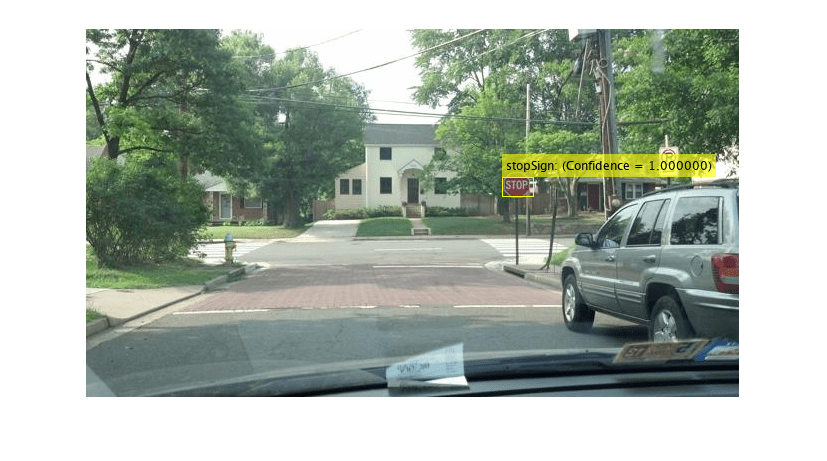rcnnObjectDetector
(Not recommended) Detect objects using R-CNN deep learning detector
rcnnObjectDetector is not recommended. Instead, use a different
type of object detector, such as a yoloxObjectDetector or yolov4ObjectDetector detector. For more information, see Version History.
Description
The rcnnObjectDetector object detects objects from an image, using a
R-CNN (region-based convolutional neural networks) object detector. To detect objects in
an image, pass the trained detector to the detect
function. To classify image regions, pass the detector to the classifyRegions function.
Use of the rcnnObjectDetector requires Statistics and Machine Learning Toolbox™ and Deep Learning Toolbox™.
When using the detect or
classifyRegions functions with rcnnObjectDetector, use of a
CUDA® enabled NVIDIA® GPU is highly recommended. The GPU reduces computation time significantly.
Usage of the GPU requires Parallel Computing Toolbox™. For information about the supported compute capabilities, see GPU Computing Requirements (Parallel Computing Toolbox).
Creation
Create a rcnnObjectDetector object by calling the trainRCNNObjectDetector function with training data (requires
Deep Learning Toolbox).
detector = trainRCNNObjectDetector(trainingData,...)
Properties
Object Functions
detect | (Not recommended) Detect objects using R-CNN deep learning detector |
classifyRegions | (Not recommended) Classify objects in image regions using R-CNN object detector |
Examples
References
[1] Girshick, Ross, et al. “Rich Feature Hierarchies for Accurate Object Detection and Semantic Segmentation.” 2014 IEEE Conference on Computer Vision and Pattern Recognition, IEEE, 2014, pp. 580–87. DOI.org (Crossref), https://doi.org/10.1109/CVPR.2014.81.
[2] Girshick, Ross. “Fast R-CNN.” 2015 IEEE International Conference on Computer Vision (ICCV), IEEE, 2015, pp. 1440–48. DOI.org (Crossref), https://doi.org/10.1109/ICCV.2015.169.
